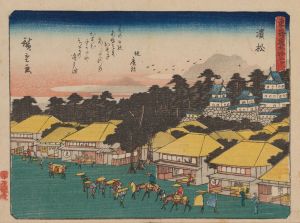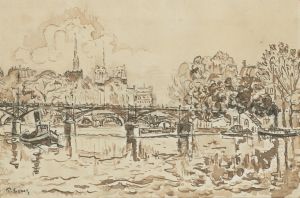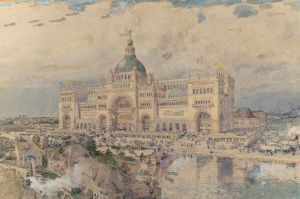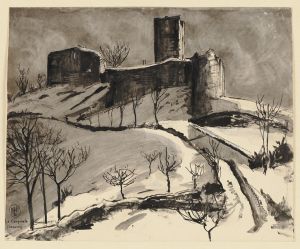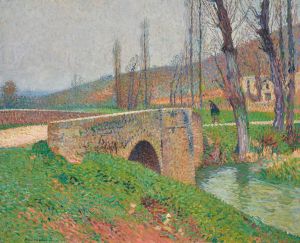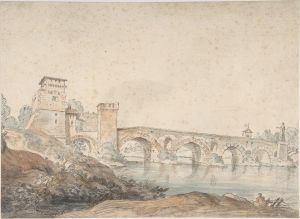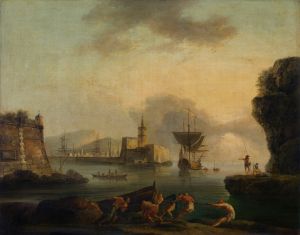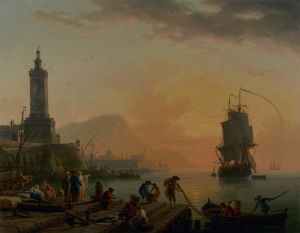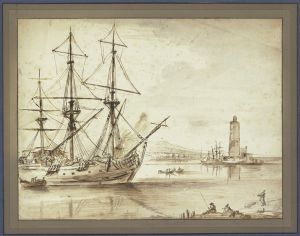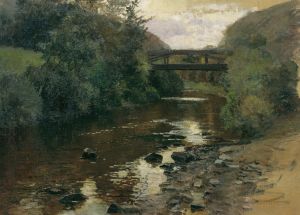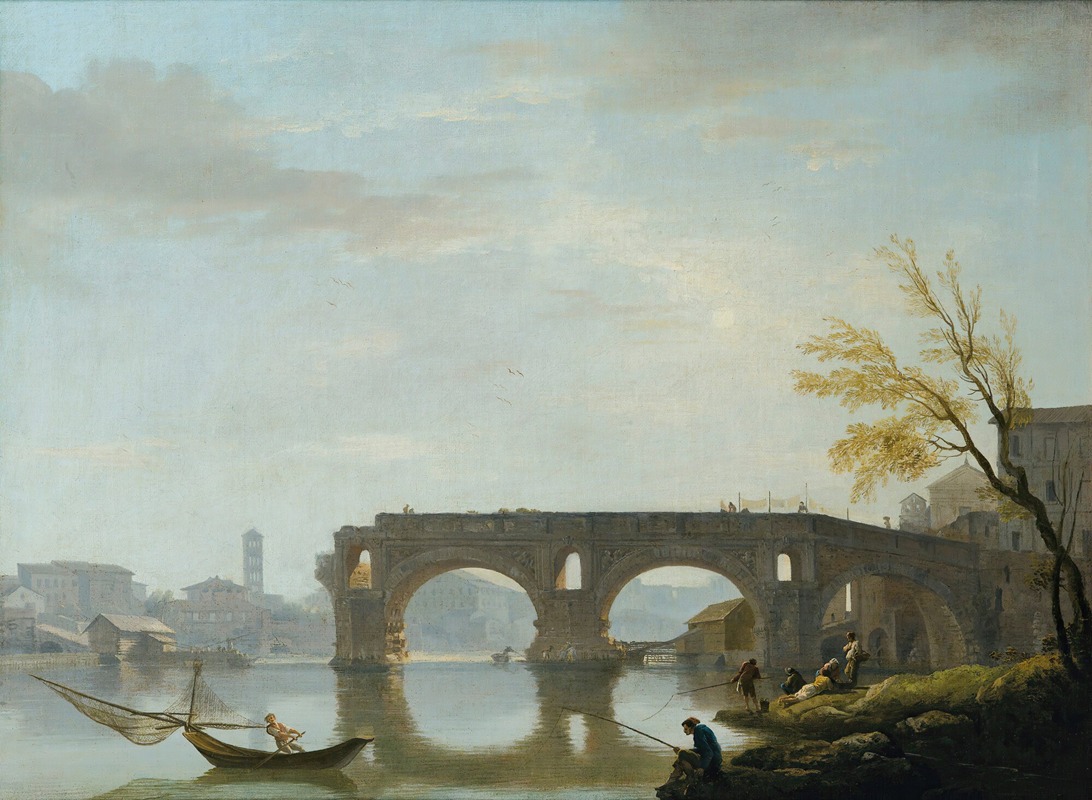
View Of The Ponte Rotto, Rome
A hand-painted replica of Claude-Joseph Vernet’s masterpiece View Of The Ponte Rotto, Rome, meticulously crafted by professional artists to capture the true essence of the original. Each piece is created with museum-quality canvas and rare mineral pigments, carefully painted by experienced artists with delicate brushstrokes and rich, layered colors to perfectly recreate the texture of the original artwork. Unlike machine-printed reproductions, this hand-painted version brings the painting to life, infused with the artist’s emotions and skill in every stroke. Whether for personal collection or home decoration, it instantly elevates the artistic atmosphere of any space.
"View of the Ponte Rotto, Rome" is a painting by the renowned French artist Claude-Joseph Vernet, created in the 18th century. Vernet, born in 1714 in Avignon, France, was a prominent landscape and marine painter, known for his ability to capture the essence of natural and architectural beauty with remarkable precision and atmospheric effects. His works are celebrated for their detailed representation and the emotive use of light and shadow.
The painting depicts the Ponte Rotto, which translates to "Broken Bridge," a historic bridge in Rome, Italy. The Ponte Rotto is the remains of the Pons Aemilius, one of the oldest stone bridges in Rome, originally constructed in the 2nd century BCE. By Vernet's time, the bridge had partially collapsed, leaving only a few arches standing, which became a picturesque ruin and a popular subject for artists and travelers during the Grand Tour era.
Vernet's depiction of the Ponte Rotto is characteristic of his style, which often combined elements of the sublime and the picturesque. The painting captures the bridge in a serene and contemplative setting, highlighting the contrast between the enduring strength of the ancient Roman architecture and the natural beauty of the surrounding landscape. The use of light in the painting is particularly noteworthy, as Vernet skillfully employs it to create a sense of depth and to emphasize the textures of the stone and the flowing water of the Tiber River.
The composition of the painting is carefully balanced, with the bridge positioned prominently in the foreground, drawing the viewer's eye to its arches and the play of light and shadow across its surface. The background features a tranquil sky, possibly at dawn or dusk, which adds to the painting's atmospheric quality. Vernet's attention to detail is evident in the meticulous rendering of the bridge's stonework and the gentle ripples of the river, which reflect the changing colors of the sky.
Claude-Joseph Vernet's work, including "View of the Ponte Rotto, Rome," played a significant role in the development of landscape painting in the 18th century. His ability to blend natural and architectural elements into harmonious compositions influenced many artists of his time and contributed to the popularity of landscape painting as a genre. Vernet's paintings were highly sought after by collectors and patrons, and his reputation extended beyond France to other parts of Europe.
Today, "View of the Ponte Rotto, Rome" is appreciated not only for its artistic merit but also as a historical document that offers insight into the appearance and condition of one of Rome's ancient structures during the 18th century. Vernet's work continues to be studied and admired for its technical skill, aesthetic beauty, and its ability to convey the timeless allure of Rome's architectural heritage.





